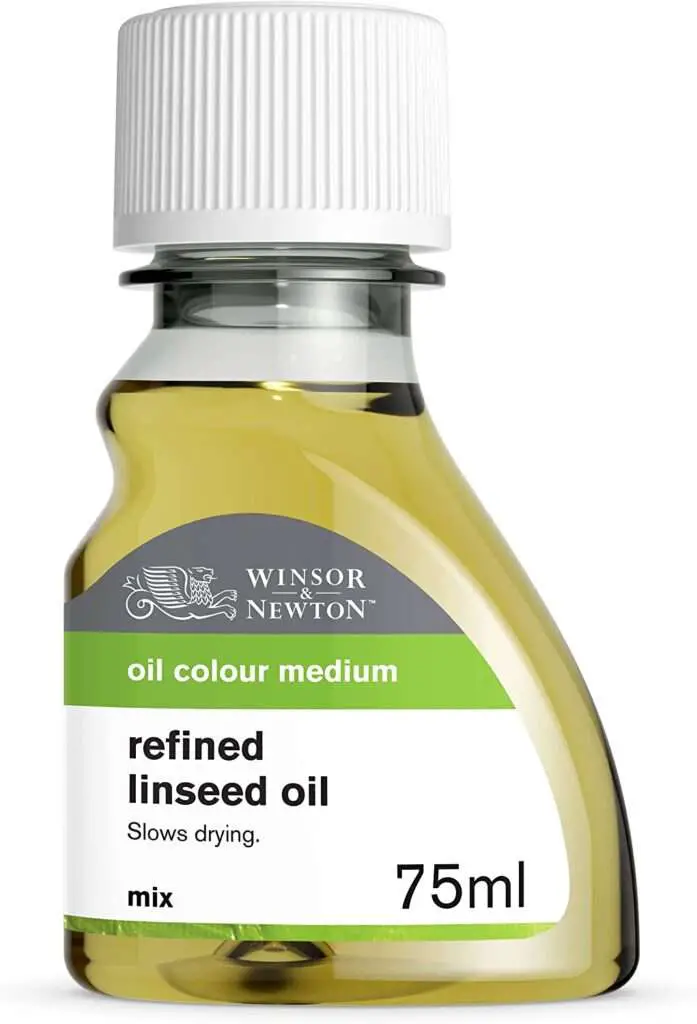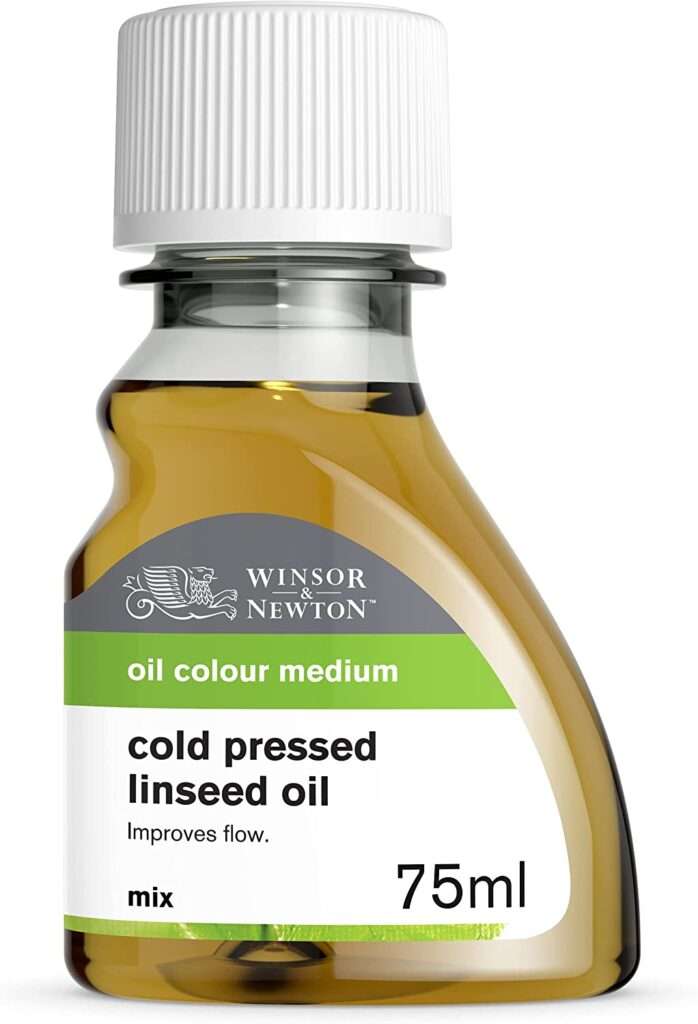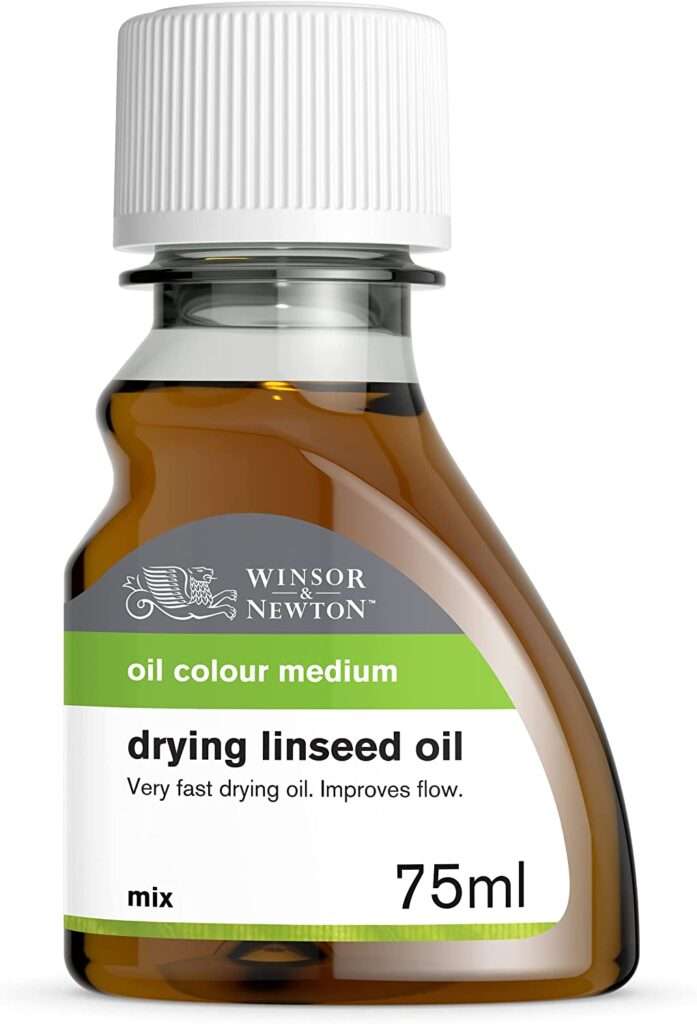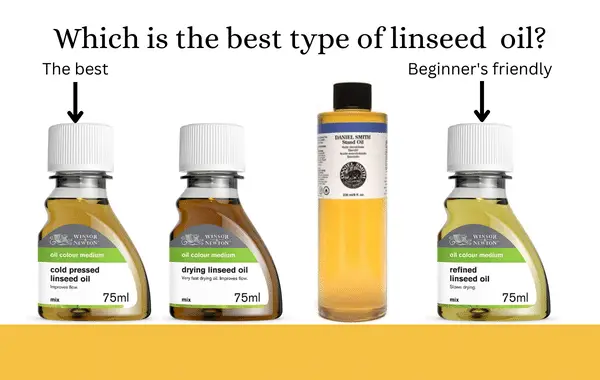The yellowish linseed is the best medium for oil painting but it further contains some forms which are different from each other in working. If you are going to use linseed oil as a medium in painting but you still have some complications with the working and quality. At first, linseed oil was extracted naturally from the flax plant. Beyond oil painting is also used as an ingredient in wood and concrete.
Table of Contents
- Types of linseed oil
- FAQs
- Conclusion
Types of linseed oil
Every oil painting master knows four types of linseed oil in oil painting. Each type has been described below
Refined linseed oil
Refined linseed oil is the purest form which is commonly used by artists in oil painting. There is so much popularity of this oil in improving the transparency of your paint. It is produced by cracking, steaming, and washing dried seeds through the procedure of steaming.
Benefits of refined linseed oil in oil painting
Refined linseed oil when mixed with paint gives a transparent and shiny touch. It also gives a little amount of consistency which creates a difference between layers. Slow drying of paint gives time to correct the mistakes and even you can also start painting from the same part after a whole day.
Drawbacks of refined linseed oil in oil painting
However, refined linseed oil is so much popular but there are various things that must be known before using it. The additional amount can give a yellowish pigment which mostly happens in lighter pigments. It could also cause cracks after drying.
Precautions
Use only a few drops which are enough for the whole painting. Always make a thick layer and let it dry first before the addition of the next layer.

If we talk about the best, then Winsor & Newton is the top-selling refined linseed oil. This pack comes in a 75ml liquid oil which is best known for reducing color consistency. It is a slow-drying medium specially made for slow and time-consuming arts.
Pros
- Beginner’s friendly
- Lower price
- Shiny and transparent touch
Cons
- Cause yellowing over a period of time
Cold-pressed linseed oil
Cold-pressed linseed oil is the purest form in which the oil is extracted without using heat. It is used as a medium for thinning and transparency in paints. It makes a strong film that is better than refined oil. It is widely used in restoration processes.
Benefits of cold-pressed linseed oil
It has better quality as compared to refined oil. This form is specially built to give a glossy, transparent, and shiny surface to your paintings. It has a greater wet look as compared to refined oil.
Drawbacks of cold-pressed linseed oil
It has a strong smell which often creates a hurdle for an artist but it does not last for a long time. It also takes a lot of time to dry which is a plus point but it needs regular maintenance till it dries completely.
Way to use cold-pressed linseed oil
Using it is extremely easy because it does not need so many precautions. Just pour a little amount of paint which you want to make transparent. Mix it well until the paint become glossy. Now it is ready to use.
Best cold-pressed linseed oil

Winsor & Newton Cold Pressed Linseed Oil is the most expensive medium as compared to price. But this particular medium is specially made for professional artists. If someone asks us which is the best medium among all the types then our answer will be cold-pressed linseed oil.
Pros
- No heat is used in manufacturing
- Reduce consistency
- Grind pigments
Cons
- Expensive
Linseed stand oil
Linseed stand oil is so much thick compared to normal oil. We can simply say it is the thicker version of linseed oil. It is a pale medium extracted from normal oil which usually works to slow the drying process. Its viscosity is so much that we can compare it with honey.
Benefits of stand oil
It is simply an upgraded version that doesn’t contain any kind of yellowish tendency like refined oil. It is a good medium that can also use by adding turpentine. When the paint dries, it maintains the original condition of the pigment.
Drawbacks of stand oil
It is not beginner’s friendly as it takes a lot of time to dry. Many professional artists use this medium to give an extra thick texture to their works.
Best stand oil

Daniel Smith is a brand based on creating original painting accessories and it is also the best seller on Amazon. This product aims to increase the duration of paints by the addition of this medium. Normally, stand oil takes a lot of time to dry but the product description and customer satisfaction show that this does not take so much to dry but it fast drying time.
Pros
- Extend lives of paints
- Speeds drying time
- Value for money
Cons
- None
Drying linseed oil
It is the final form which use in painting. If we talk about quality then no other type could be best than drying linseed oil. It is darker as compared to normal oil and is also the fastest-drying type of linseed oil.
Benefits of drying linseed oil
Like linseed oil, it gave the same results of consistency and transparency but the quality is far better. For best results, you should use it on the lower layers of your painting.
Drawbacks of drying linseed oil
If we compare it with normal linseed oil, most drawbacks turn into benefits but the only drawback is that this is not beginner’s friendly as it is costly to use in beginner’s oil paintings as a medium.
Best-drying linseed oil

Winsor & Newton drying linseed oil is specially made to fasten the drying time. It usually dries at a twice faster rate and shows twice effective working. There is doubt in people about its cap which is so much hard to open. This is to avoid the reach of children.
Pros
- Better flow
- Fast drying time
Cons
- For professional use only
FAQs
Is linseed oil toxic?
Linseed oil is not toxic but safety must be on top priority.
Can we substitute cooking oil for linseed oil in painting?
No, you must not add cooking oil because it will not be going to be good for the painting. Instead of cooking oil, use other ones like turpentine oil.
Can I use linseed oil as a varnish for oil painting?
No, you cannot use it because oil is slow drying and cannot be dry like varnish. After some years varnish will going to be removed then all the efforts going to be useless.
Conclusion
All the types are beneficial to some extent but cold-pressed linseed oil is the best type which contains so many benefits. Although, refined linseed oil is best for beginners drying oil is best for professionals. A good artist always prioritizes those things which are helpful for him, not those which are workable for others. Try once to check the quality of all of them.
If you have any questions, please drop them down and give us a chance to help you and others. You can also contact us for more information.
